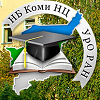Two Methods of Calculation of Bulk Weight of Silvinite Ore Using its Chemical Content: Talitskiy Field, Verkhnekamskoye Deposit
Abstract
Keywords
Full Text:
PDF (Русский)References
Guskov O.I., Kushnaryov P.N., Taranov S.M. 1991. Matematicheskie metody v geologii [Mathematical methods in geology]. Sbornik zadach. Uchebnoe posobie dlya vuzov Moskva, Nedra, p. 205. (in Russian)
Davies J.S. 1990. Statistics and Data Analysis in Geology. John Wiley & Sons, Inc., New York, NY, USA, p. 656.
Kazhdan A.B., Guskov O.I. 1990. Matematicheskie metody v geologii [Mathematical methods in geology]. Uchebnik dlya vuzov Moskva, Nedra, p. 251. (in Russian)
Metodicheskie rekomendatsii po primeneniyu Klassificatsii zapasov i prognoznykh resursov tvyordykh poleznykh iskopaemykh. Soli [Methodical recommendations on application of Classification of reserves and potential mineral resources. Salts]. 2006. No. 37-r. Moskva, Ministrstvo Prirodnykh Resursov RF, p. 47. (in Russian)
Metody analiza rassolov i soley. [Methods of the analysis of brines and salts]. Vsesoyuznyy Nauchno-Issledovatelskiy Institut Galurgii (VNIIG). XLVII (3), Eds. Yu.V. Morachevskiy, E.M. Petrova. Moskva-Leningrad, Khimiya, 1965, p. 404. (in Russian)
Myagkov V.F. 1984. Geokhimicheskiy metod parageneticheskogo analiza rud [Geochemical method of the paragenetic analysis of ores]. Moskva, Nedra, p. 126. (in Russian)
Myagkov V.F., Bybochkin A.M., Bugaev I.I., Panov Yu.K., Barannikov A.G., Dubeykovsky S.G., Kosyrin A.K., Petrukha L.M. 1986. Rudnichnaya geologiya [Ore geology]. Uchebnoe posobie dlya vuzov, Moskva, Nedra, p. 199. (in Russian)
Porotov G.S. 2006. Matematicheskie metody modelirovaniya v geologii [Mathematical methods of modeling in geology]. Sankt-Peterburg, St. Peterburg gos. gor. Inst., p. 223. (in Russian)
Marriot F.H.C. 1974. The interpretation of multiple observations. Academic Press, Inc., London, p. 117.
Morrison D.F. 1976. Multivariate statistical methods, McGraw-Hill, Inc. New York, p. 415.
Morrison D.F. 1983. Applied statistical methods. Prentice-Hall, Inc., Englewood Cliffs. New York, p. 562.
DOI: http://dx.doi.org/10.17072/psu.geol.27.63
Refbacks
- There are currently no refbacks.















